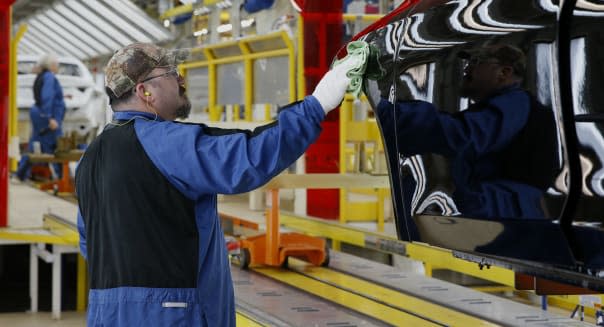Factory Activity Picks Up, More Gains Eyed as Winter Fades

By Lucia Mutikani
WASHINGTON -- U.S. factory activity rose in March, with production posting its biggest increase since the recession ended in the latest indication the economy was regaining its footing after a brutal winter.
An unusually cold and snowy winter chilled activity early in the year and signs of a thaw should boost hopes of a strong bounce back in economic growth in the second quarter.
"Winter is over. The economy is looking more positive today and overall business conditions continue to show improvement," said Chris Rupkey, chief financial economist at Bank of Tokyo-Mitsubishi UFJ in New York.
The Institute for Supply Management said Tuesday its index of national factory activity rose to 53.7 last month from a reading of 53.2 in February.
Though it was below economists' forecast for a 54 reading, March marked the second month of gains. Readings above 50 indicate expansion in the sector, which accounts for about 12 percent of the economy.
Activity was buoyed by a 7.7 percentage point rebound in the production index after it showed contraction in February. The increase was the largest since June 2009, just as the recession was ending.
The forward-looking new orders index rose to 55.1 from 54.5 in February.
There was also a surge in order backlogs and export orders. %VIRTUAL-article-sponsoredlinks%Fourteen of the 18 manufacturing industries reported growth.
"The broad-based nature of the gains among industries underscores the extent of the rebound as the sector continues to dig itself out of the weather-induced slump earlier this year," said Millan Mulraine, deputy chief economist at TD Securities in New York. "It offers an upbeat assessment on manufacturing."
Stocks on Wall Street pushed higher on the factory report, with the Standard & Poor's 500 index hitting a record high. Prices for U.S. Treasury debt fell and the dollar was marginally weaker against a basket of currencies.
Even as the sector begins to break out of the cold spell, factory activity remains weaker than during the second half of last year. Warehouses are bulging with massive stocks of unsold goods accumulated in the second half of 2013, leaving businesses with little incentive to place large orders with manufacturers.
Customer Inventories Down
The ISM survey found a sharp drop in customers' inventories, though manufacturers' inventories were unchanged from February.
A desire to reduce inventory and the harsh weather are expected to hold the economy to an annualized growth pace below 2 percent in the first quarter. That would be a step back from the fourth-quarter's 2.6 percent rate.
A separate factory gauge from data firm Markit slipped in March, but stayed in positive territory, as ebbing overseas demand clipped orders.
While manufacturing appears to shaking off winter's chill, construction activity continued to be held back in February.
The Commerce Department said construction spending edged up 0.1 percent after slipping 0.2 percent in January.
Construction spending was curbed by a 0.8 percent drop in private residential construction projects, which was the largest fall since July.
But a surge in spending on nonresidential construction, such as factories and power plants, lifted overall private outlays to their highest level since December 2008.
"Given housing's recent disappointing numbers, this sector's cyclical turnaround comes at a good time," said Stephanie Karol, an economist at IHS Global Insight in Lexington, Mass.
"Real construction spending should contract in the first quarter. This is an inauspicious beginning to 2014, but we expect conditions to improve later in the year."
The decline in private residential construction was led by a 1.1 percent drop in single-family home building.
Public construction spending nudged up 0.1 percent in February, with a jump in federal outlays offsetting a fall in state and local government spending.
-Additional reporting by Ryan Vlastelica in New York.
